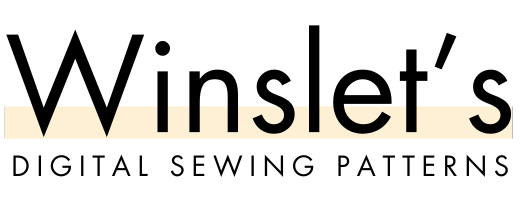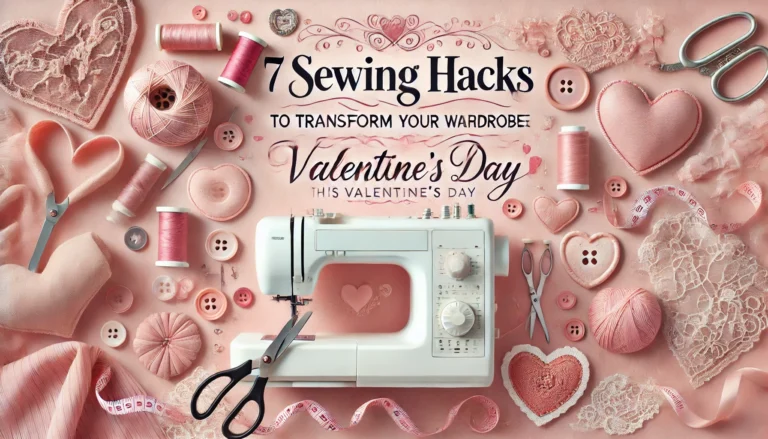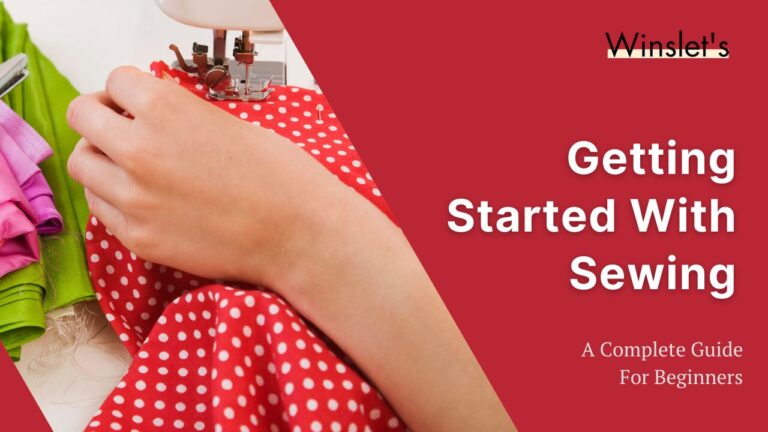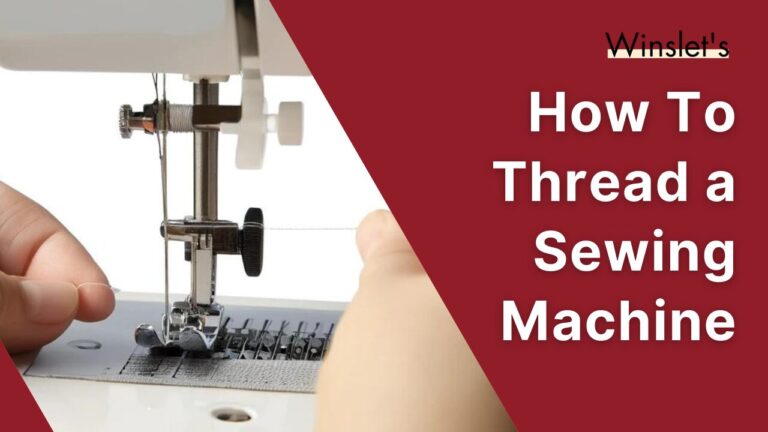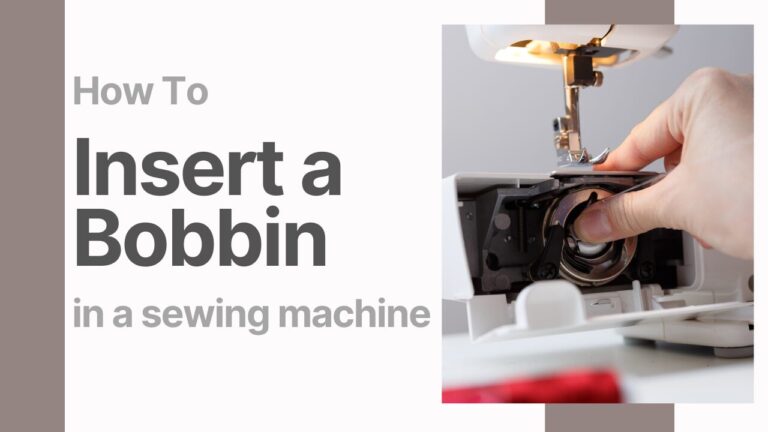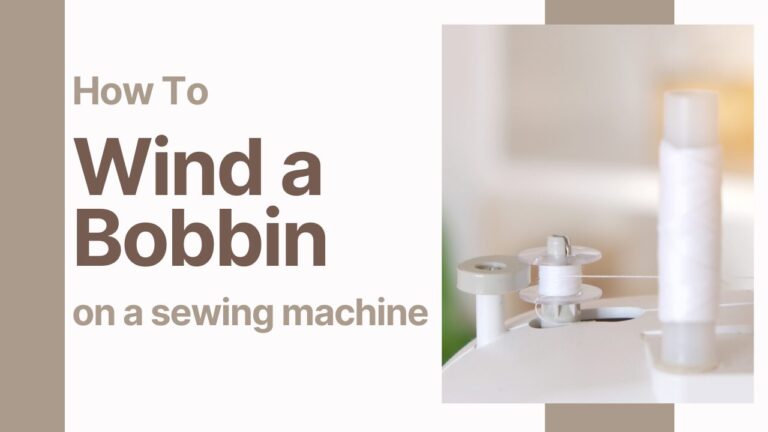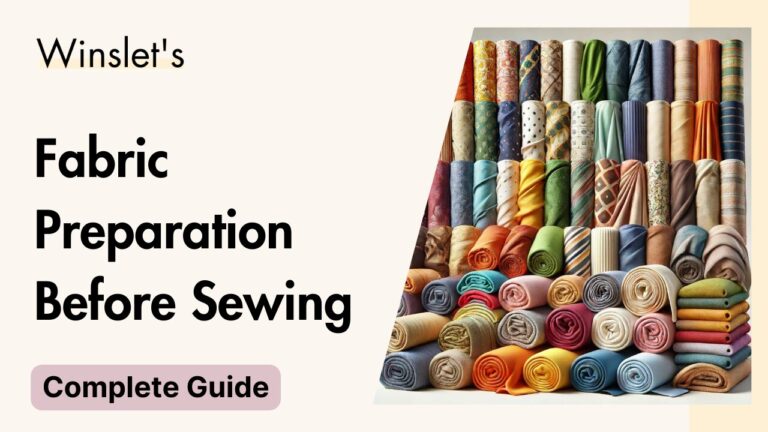150+ Essential Sewing Glossary Terms: A Comprehensive Guide for Beginners and Experts
Welcome to the ultimate guide to sewing terminology! Whether you’re just starting out or you’re a seasoned sewist, understanding the language of sewing is crucial to mastering the craft. This comprehensive glossary of 150+ sewing terms will help you navigate patterns, communicate with fellow sewists, and enhance your overall sewing experience. From the basics like “backstitch” and “bias tape” to more advanced terms like “godet” and “rouleau loop,” this guide covers everything you need to know. Let’s dive in and expand your sewing vocabulary!
A
- Anchoring Stitches: Machine stitches with zero stitch length used to secure the beginning or end of a seam.
- Appliqué: A decorative fabric piece sewn onto another fabric to create a design.
- Armscye: The armhole opening in a garment where the sleeve is attached.
- Awl: A small pointed tool used for making holes in fabric or leather.
- A-line: A style of dress or skirt that is fitted at the waist and gradually widens towards the hem, resembling the shape of the letter “A.”
B
- Backstitch: A strong stitch used at the beginning and end of a seam to prevent unraveling.
- Ballpoint Needles: Special needles designed for sewing knit fabrics; they have rounded tips that slip between fabric fibers rather than piercing them. [Get your ballpoint needles here]
- Baste: Temporary stitching used to hold fabric pieces together before final stitching.
- Bearding: A quilting term for when the wadding comes through onto the top of the quilt.
- Bias: The diagonal grain of fabric that has more stretch and is often used for binding or draping.
- Bias Tape: Strips of fabric cut on the bias, often used to finish edges or seams. [Get your bias tape here]
- Binding: A narrow strip of material sewn around the edge of a garment, bag, or quilt.
- Bitsy Bag: A bag that hangs from your sewing table to collect threads and small fabric pieces.
- Blanket Stitch: A hand stitch used for finishing a fabric edge.
- Blind Hemming: A method of hemming where the stitches are hidden on the outside of the garment.
- Boning: Stiff strips of plastic or metal used in garments like corsets to provide structure.
- Box Pleat: A pleat consisting of two parallel folds facing opposite directions, creating a box-like appearance.
- Broderie Perse: A form of appliqué where motifs are cut from one fabric and sewn onto another.
- Bumblebunching: Tangled loops of stitching on the bobbin side of the fabric caused by improper tension.
- Buttonhole: A sewn hole in the fabric to allow buttons to pass through and fasten.
C
- Casing: A folded-over edge of fabric that can hold elastic, drawstring, or boning.
- Chain Stitch: A looped stitch that resembles a chain, used in embroidery and for securing hems.
- Charm Square: A pre-cut 5″x5″ square of fabric, often used in quilting.
- Clip: To cut small slits into the seam allowance, usually in curves, to reduce bulk.
- Cording: A decorative trim made of twisted fibers, often inserted into seams.
- Couture: The art of designing, creating, and fitting custom garments, often with meticulous attention to detail.
- Crossgrain: The line of fabric perpendicular to the selvage edge of the fabric.
- Cross Stitch: A needlework stitch that uses two stitches that cross over to create a cross shape.
- Crochet: A method using yarn and a hooked needle to create fabric or lace.
- Cutting Mat: A surface designed to protect your work surface while cutting fabric, often marked with measuring grids.
D
- Darn: Repairing a small hole, usually in knitwear, by weaving thread over the damaged area.
- Dart: A folded and sewn wedge of fabric that helps shape a garment to the body.
- Double Needle: A needle with two points used to create parallel rows of stitching.
- Dress Form: A mannequin used to fit and drape garments.
- Drape: The way fabric hangs or flows in a garment.
- Drapeability: The quality of a fabric that allows it to hang or flow gracefully.
- Dissolvable Fabric: Water-soluble fabric used in freeform machine embroidery.
E
- Ease: The difference between the garment measurements and body measurements that allows for movement and comfort.
- Ease Stitching: Loose, temporary stitches used to slightly gather fabric along a seam.
- Edge Stitch: A straight stitch sewn very close to the edge of a fabric.
- Embellishment: Decorative items like buttons, beads, or embroidery added to a garment.
- Embroidery: Decorative stitching done by hand or machine on fabric.
- Epinglé: A type of fabric with raised loops or patterns, often used in upholstery or decorative textiles.
F
- Facing: A piece of fabric sewn to the edge of a garment to finish it neatly.
- Fat Quarter: A quarter-yard of fabric that is cut to measure 18×22 inches instead of the standard 9×44 inches.
- Feather Stitch: A decorative hand stitch that joins two layers of fabric or is used as an embellishment.
- Feed Dogs: The metal teeth on a sewing machine that move the fabric under the needle.
- Felting: The process of compressing and condensing wool fibers to create felt.
- Finger Press: Using your fingers or a flat object to press seams open or flat without an iron.
- Fish Eye Dart: A double-ended dart that is wider in the middle and tapers off at both ends, often used to create shape in the waist area of a garment.
- Flat-felled Seam: A strong, durable seam where the raw edges are enclosed within the seam, often used in jeans and workwear.
- Flexible Curve: A tool used in pattern drafting to create smooth, curved lines.
- Frogging: The process of unpicking stitches, often humorously referred to as “rip-it, rip-it.”
- French Seam: A seam that encloses the raw edges, often used on lightweight fabrics to give a clean finish without a serger.
- Fuse: The process of using an iron to glue two fabrics together, often to attach interfacing.
- Fusible Fleece: An iron-on interfacing made from soft, lightweight synthetic material, used to add volume and structure.
- Fusible Interfacing: Interfacing that has adhesive on one side, which is activated with heat to fuse it to fabric.
- Fussy Cut: Cutting fabric to position a specific motif or design in a particular place on a project.
G
- Gathering: A technique where fabric is bunched together to create fullness.
- Grade: Trimming the seam allowances at different widths to reduce bulk and create a smooth finish.
- Godet: A triangular piece of fabric inserted into a seam to add fullness or flare, commonly used in skirts or dresses.
- Grainline: The direction of the threads in a fabric. The straight grain runs parallel to the selvage, while the cross grain runs perpendicular.
- Gusset: A piece of fabric inserted into a seam to add extra room or ease.
H
- Hem: The edge of a piece of fabric that is turned under and sewn to prevent unraveling.
- Hem Tape: A tape used to create a clean, professional finish on hems.
- Herringbone Stitch: A decorative stitch that creates a zigzag pattern, often used in embroidery or finishing hems.
- Hong Kong Seam: A seam finish that uses bias tape to encase the raw edges, leaving the inside neat and finished.
- Hooks and Eyes: Small fasteners used at garment openings to hold the fabric together.
I
- Inset: A piece of fabric sewn into a garment, often for decorative purposes, such as lace or contrasting fabric.
- Interfacing: A material used to add structure and stability to fabric, often used in collars, cuffs, and facings.
- Interlining: A layer added between the fabric and lining for warmth or additional structure.
- Invisible Zipper: A zipper designed to be hidden within a seam, leaving only a small pull visible.
- Iron-On Transfer: A method of applying a design to fabric using heat and pressure.
J
- Jelly Roll: A pre-cut bundle of fabric strips, each 2.5″ wide, used in quilting.
- Jeweller’s Knot: A knot tied on a thread strand and pulled down to the base, often used in hand-sewing.
- Jersey: A type of knit fabric known for its stretch and softness, often used in t-shirts and dresses.
- Jig: A tool used to guide fabric or other materials while cutting or sewing.
K
- Knit Fabric: A fabric made from interlocking loops of yarn, known for its stretch and comfort.
- Knife Pleat: A type of pleat where folds are pressed in one direction, creating sharp, crisp lines.
L
- Ladder Stitch: A stitch used to close large openings or join two pattern pieces seamlessly.
- Lapped Seams: Seams where one piece of fabric is sewn over the other with the seamlines meeting in the middle.
- Lining: A layer of fabric sewn inside a garment to provide a clean finish and often add warmth.
- Lockstitch: A basic stitch made by the sewing machine that locks the thread in place.
- Loom: A device used to weave fabric by interlacing threads.
M
- Mark: The process of transferring pattern symbols and markings onto fabric using various tools like chalk, tailor’s tacks, or markers.
- Muslin: A lightweight cotton fabric often used for making test garments or patterns.
- Mitered Corner: A corner that is folded and sewn at a 45-degree angle to create a sharp, clean finish.
- Match Point: A point marked on one pattern piece to be matched to a similar point on another piece.
N
- Nap: The raised, fuzzy surface of a fabric like velvet or corduroy, which can create a directional difference in color or texture.
- Needle Plate: The metal plate under the needle on a sewing machine that has openings for the needle and feed dogs.
- Notches: Diamond-shaped marks that stick out beyond the edge of the pattern, helping to line up all the pattern pieces.
- Notions: Small tools and supplies used in sewing, such as pins, needles, scissors, tape measures, and more. [Buy your notion set here]
O
- Open-Ended Zip: Zippers with two parallel rows of teeth not joined at the ends, often used in jackets.
- Overlay: A layer of fabric placed over another layer for decorative or functional purposes.
- Overlocker (Serger): A specialized sewing machine that trims and finishes the edges of fabric, often used to prevent fraying. [Looking to buy a serger or overlocker, here are the Top 3 sergers]
P
- Patchwork: Sewing together small pieces of fabric to create a larger design, often used in quilting.
- Pattern: A template used to cut out fabric pieces for sewing garments or other items. Find some great digital sewing patterns at Winslet’s
- Pintuck: A narrow, stitched fold of fabric, usually seen in multiples, creating a stylish and smart finish.
- Piping Foot: A sewing machine foot designed to help sew piping into seams, keeping the stitches close to the piping cord.
- Placket: An opening in a garment, typically with a closure like buttons or snaps, often found at the front of shirts.
- Pleat: A fold in the fabric created by doubling the material back on itself and securing it in place.
- Presser Foot: The part of a sewing machine that holds the fabric in place while stitching. [Get your 48Pcs Presser Feet Set]
- Princess Seam: A vertical seam line that gives shape to a garment in place of darts.
Q
- Quilting: The process of sewing together layers of fabric, often with a layer of padding in between, to create a thicker, insulated material. [Have a look at the best quilting machines]
R
- Raw Edge: The unfinished edge of the fabric that has not been hemmed or otherwise treated.
- Right Side / Wrong Side: The right side is the outer, visible side of the fabric, while the wrong side is the inner, hidden side.
- Rotary Cutter: A cutting tool with a circular blade, used for cutting fabric with precision. [Get your rotary cutter set here]
- Rouleau Loop: A small, thin loop of fabric used as a button loop or decorative detail, often made from bias-cut fabric.
- Running Stitch: A simple hand-sewn stitch that weaves up and down through the fabric, creating a dashed line of stitches, often used for basting or gathering.
- Ruffler: A sewing machine attachment used to create evenly spaced pleats or gathers.
S
- Seam: The line where two pieces of fabric are joined together by stitching.
- Seam Allowance: The area between the edge of the fabric and the stitching line, usually 1/4 to 5/8 inch. [Read more about Seam Allowance]
- Seam Finish: Techniques used to finish the raw edges of a seam to prevent fraying, such as serging, pinking, or binding.
- Seam Ripper: A small tool used to cut and remove stitches. [Get your seam ripper here]
- Selvage: The tightly woven edge of a fabric that prevents it from fraying.
- Serger: Another term for an overlocker, a machine that trims and finishes fabric edges. [Looking to buy a serger or overlocker, here are the Top 3 sergers]
- Shirring: A series of parallel rows of stitching used to gather fabric.
- Staystitching: A line of stitching used to stabilize fabric and prevent it from stretching.
- Stitch in the Ditch: A technique where you sew directly into the seam line to make the stitching nearly invisible.
- Straight Grain: The direction of fabric that runs parallel to the selvage and has little to no stretch.
- Satin Stitch: A very close zigzag stitch often used for appliqué and decorative edges.
- Stretch Percentage: The measure of how much a knit fabric can stretch, important for ensuring the fabric meets the requirements of a pattern.
- Serging: A method of sewing that trims and encloses the seam allowance with an overcast stitch, often done with a serger machine.
T
- Tailor’s Clapper: A wooden tool used to press seams flat by applying pressure, often used in tailoring for crisp seams.
- Tailor’s Tacks: Loose hand-sewn stitches used to transfer pattern markings onto fabric.
- Tailor’s Ham: A firm cushion used for pressing curves, collars, and darts.
- Thread Tension: The tightness of the thread as it is sewn, controlled by adjustments on the sewing machine.
- Toile: A test garment made from inexpensive fabric to check the fit and design before cutting into the final fabric.
- Topstitch: A line of stitches on the outside of a garment, often for decorative purposes or to strengthen seams.
- Trim: Cutting away excess fabric, usually from a seam allowance, to reduce bulk.
- Tuck: A stitched fold of fabric, often used to add shape or decoration to a garment.
U
- Underlay: The layer of fabric underneath another layer, often used in appliqué or quilting.
- Underlining: An additional layer of fabric sewn together with the main fabric to add body, support, or opacity.
- Understitching: A row of stitches sewn close to a seam on the facing or lining side to prevent it from rolling to the outside.
- Utility Stitch: A stitch used for functional purposes, such as securing hems or creating seams.
V
- Vertical Bobbin: A bobbin setup in a sewing machine where the bobbin moves vertically to pick up the thread.
W
- Walking Foot: A presser foot that helps feed multiple layers of fabric through the machine evenly, often used in quilting. [Get your walking foot in this 48Pcs Presser Feet Set]
- Warp: The lengthwise threads in a woven fabric.
- Weft: The crosswise threads in woven fabric.
- Whipstitch: A simple stitch that wraps around the edge of fabric to join two pieces together.
- Woven Fabric: Fabric made by weaving threads together, with warp and weft threads creating a grid-like structure.
Z
- Zipper Foot: A sewing machine foot that allows you to sew close to the edge of a zipper.
- Zigzag Stitch: A stitch that moves the needle from side to side, creating a zigzag pattern, often used to finish raw edges or add stretch.
With over 150 essential sewing terms at your fingertips, you’re now equipped to tackle any sewing project with confidence and precision. Whether you’re following a pattern, discussing techniques with fellow sewists, or teaching others, understanding this comprehensive glossary will enhance your sewing skills and enrich your crafting experience.
Remember, sewing is a journey of continuous learning, so don’t hesitate to revisit this glossary whenever you come across a new term or technique. If you found this guide helpful, be sure to share it with your sewing community and let us know in the comments if there are any other terms you’d like to see added.
Happy sewing!
Partner disclosure: https://blog.winslets.com is a participant in the Ebay Partner Network and Amazon Services LLC Associates Program. We earn a small advertising fees by linking to products on Ebay and Amazon. This does not increase the price for you as a reader but you will support our small business.
If you are a sewist, have a look at our recommended sewing machines: beginner sewing machines, sewing tools and notions, coverstitch sergers and overlock machines, embroidery machines and quilting sewing machines, sewing practice sheets and sewing project planner.
If you are looking for sewing patterns, here are some great options: Activewear Sewing Patterns, Plus Size Sewing Patterns, Outerwear Sewing Patterns, Jumpsuit Sewing Patterns, Coord Set Sewing Patterns, Pants Sewing Patterns, Shorts Sewing Patterns, Skirts Sewing Patterns, Dress Sewing Patterns, Top Sewing Patterns, Bodycon Sewing Patterns, Evening Dresses Sewing Patterns, Loungewear Sewing Patterns, Cottagecore Sewing Patterns, Free Sewing Pattern.
Happy Stitching.
